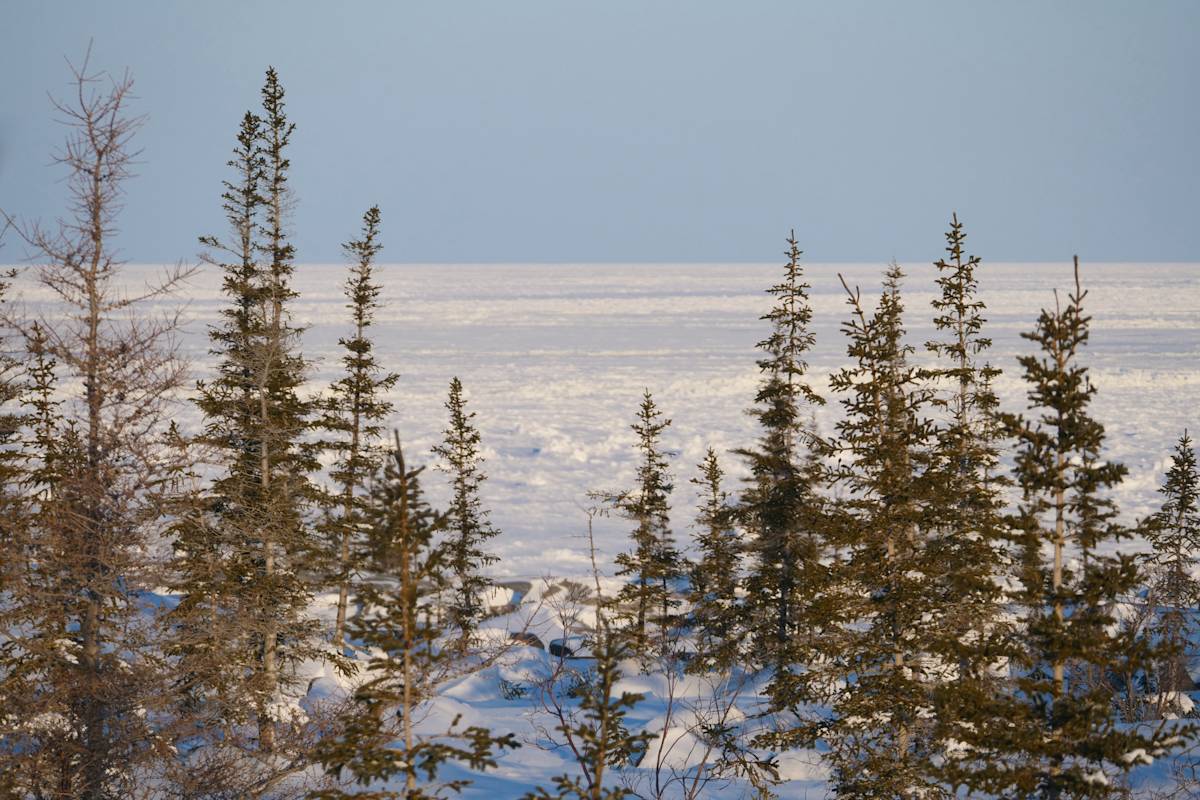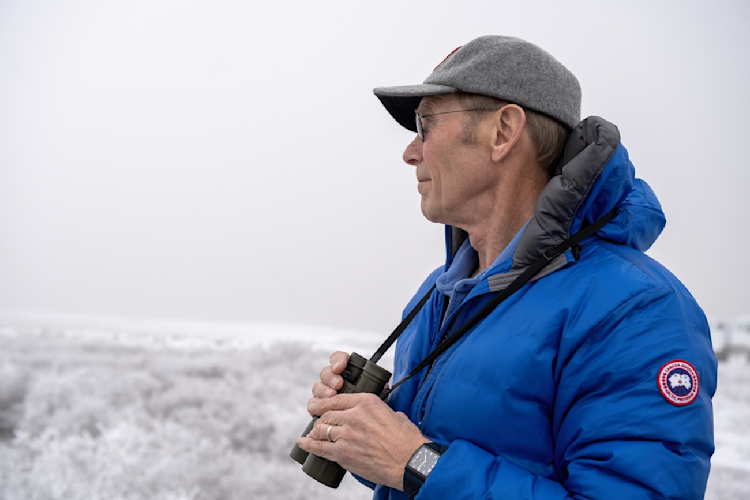
Photo: Dave Allcorn / Polar Bears International
Hudson Bay
Polar Bear Hunting
MINS
03 Sep 2025
Hunting is important to some Indigenous peoples as part of both culture and subsistence. Vigilance is needed to ensure quota systems are sustainable, keeping hunting within the bounds that populations can support.
While climate change remains the overarching threat to polar bears, overhunting is a growing issue for some populations. It’s a concern we are monitoring closely along with the IUCN Polar Bear Specialist Group, which is composed of scientists from the five polar bear nations — Canada, Russia, Denmark (Greenland), Norway and the United States.
The history of legal hunting
Historically, overhunting was the polar bears’ greatest threat. From the 1800s up through the 1960s, commercial and later sport hunters greatly reduced polar bear numbers across their range. Populations rebounded in most places after the five polar bear nations signed the International Agreement on the Conservation of Polar Bears. The Agreement halted commercial hunting and significantly curtailed sport hunting.
The Agreement allowed legal, sustainable harvest to continue on a limited basis for Indigenous peoples in some countries, based on quota systems that allow populations to regenerate. These hunts have long been an important part of Indigenous cultural traditions and are part of subsistence lifestyles in some regions.
Polar Bears International’s stance
As part of our own value system and respect for Indigenous peoples, we do not oppose Indigenous hunting that does not threaten polar bears at the population level.
Partly due to other pressures, especially climate change, new research suggests that hunting could become unsustainable in some regions. This is a warning that these regions may require enhanced population monitoring. We will speak up if hunting approaches unsustainable levels and when changes to management threaten sustainability.
We are concerned about a unilateral move by Nunavut, Canada in 2019 that raises the long-term impact of hunting through the increased loss of reproductive females and the subsequent loss in reproduction. Our concerns are heightened as these changes affect roughly two-thirds of the global population of polar bears. It also impacts management in other countries and adjacent provinces/territories that share polar bear populations with Nunavut, which have had no direct say in the decision.
At the 2024 meeting of the IUCN Polar Bear Specialist Group, members called out this threat and are in dialogue with members of the Polar Bear Range States — the global management body for polar bears—on the urgent need for Nunavut to address this.
In addition, we’re closely watching changes to polar bear management in Nunavut proposed in September 2025. If accepted, this proposal would fundamentally change how polar bears are managed across much of Canada, potentially impacting a significant number of the world’s polar bears.
Because Polar Bears International’s purpose is to protect a future for polar bears, we have an obligation to help people stay safe when living, working or recreating in polar bear country. We recognize that people are worried about increased polar bear encounters, and may turn to lethal removal for short-term relief. Evidence shows that preventing negative polar bear encounters can be very effective for increasing safety in the longer term. That’s why we support innovative tools and partnerships to keep polar bears away from communities, and to safely defuse encounters when they do happen. It’s also important for wildlife managers to closely and regularly monitor polar bear populations so they can promptly react to shifts.
Our asks
We respectfully urge the Polar Bear Range States in partnership with the IUCN Polar Bear Specialist Group to formally discuss these concerns, examine the risks, and work cooperatively to find equitable solutions.
We respectfully urge Nunavut to reconsider its 2019 change to hunting quotas to better protect female bears.
We’re calling on polar bear management authorities in Canada to ensure regular and accurate monitoring to assess the population impacts of these enacted changes on hunting and increased risk to sustainable populations.
We also request that authorities ensure core denning areas are identified, monitored and protected as environmental changes — like wildfire, changes in snowfall and melting permafrost — may force pregnant polar bears across their range to choose different den locations.
What Polar Bears International is doing
Protecting polar bear mothers and cubs: Polar Bears International funds research into polar bears’ denning period — the most vulnerable time in their lives. Our work includes testing technology to better detect dens under snow and monitoring polar bear behavior at den sites.
Reducing conflict: We support efforts to help people and polar bears live safely alongside each other, including waste management to reduce attractants, radar to detect approaching bears and testing new deterrents.
Monitoring trends: We support population monitoring that tracks polar bear numbers and the health of populations.
Sharing science: We advocate at local, regional, national and international levels for improved management of polar bear populations, bringing knowledge-based proposals to wildlife managers.
Ultimately, the greatest threat to polar bears as a species is loss of their sea ice habitat. Polar bears depend on the sea ice surface to catch their seal prey, and climate change means progressively less sea ice on which they can hunt. If sea ice declines continue to drive down population numbers, ultimately there will be no sustainable hunting anywhere.

Photo: Jenny Wong
Meet Our Scientists
With researchers based in the U.S., Canada, Denmark, and Norway, our impact spans the circumpolar Arctic.
















